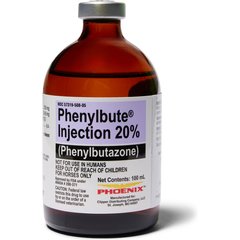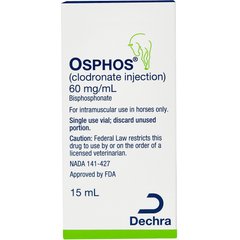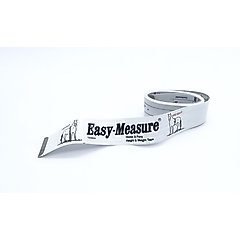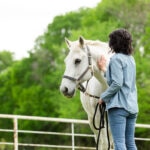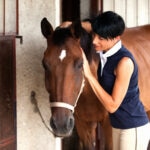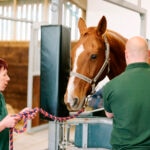What Is Navicular in Horses? What Are the Signs?
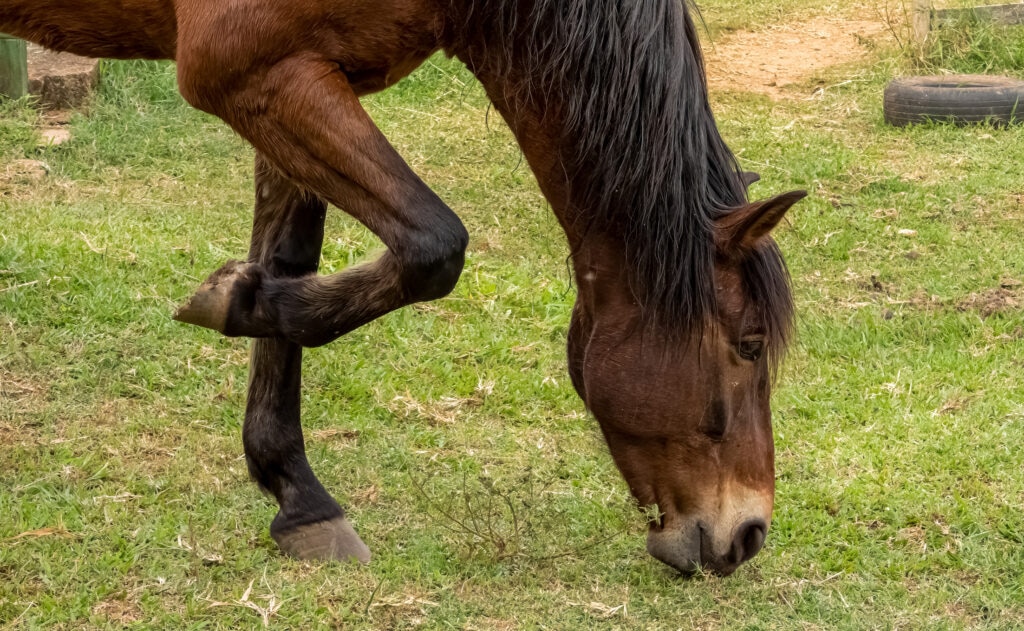
Photo by Cassia Bars/iStock / Getty Images Plus
Decades ago, navicular in horses was a career-ending, sometimes life-ending diagnosis. But thanks to advances in research, treatment, and management practices, many horses can remain comfortable and even rideable for years after a navicular diagnosis.
Here’s what you need to know about navicular syndrome, how to reduce your horse’s risk, and how to manage a diagnosis.
Key Takeaways
- Navicular is also referred to as navicular syndrome and navicular disease.
- The term navicular refers to degeneration of the navicular bone and surrounding tissue.
- Navicular will cause lameness and discomfort that can often be managed with a plan made by your veterinarian and farrier.
What Is Navicular in Horses?
Navicular in horses is a progressive degenerative disease that affects the soft tissue, navicular bone, and surrounding structures in the hoof.
While there is no cure for navicular syndrome in horses, research has allowed veterinarians and farriers to improve management and outcomes for horses diagnosed with navicular disease. Some breeds, including Quarter Horses, Warmbloods, Standardbreds, and Thoroughbreds, are more susceptible to navicular than others.
Navicular is not a medical emergency, but it’s essential to contact your veterinarian at the earliest signs of lameness. Early detection and intervention give your horse the best chance of feeling relief and returning to work.
What Are the Signs of Navicular in Horses?
The earliest signs of navicular syndrome in horses can be as subtle as a horse not collecting their stride or using their body correctly, explains Molly O’Brien, DVM, a resident veterinarian at Iowa State University’s College of Veterinary Medicine.
Common signs of navicular in horses include:
- Stumbling
- Tripping
- Poor performance
- Shortening of the stride
- Heel pain
- Landing toe-first instead of a flat or slightly heel-first landing
- Standing with a “pointed toe” stance
- Limping on one or both front feet
- Adjusting their footing or bedding to tip their toes down to relieve pressure
What Causes Equine Navicular?
The exact cause of navicular disease in horses is still unknown, but conformation (how the horse is naturally built) is thought to be the most significant contributing factor.
Research has shown that genetics may be connected to navicular syndrome. It may be connected to heritable conformation traits (e.g., small feet) that predispose horses to the condition. Horses with small feet for their body weight are 7.5 times more likely to develop hoof lameness.
These conformation traits predispose horses to navicular syndrome:
- Small hooves
- Narrow, upright feet
- Contracted heels
- Small, narrow frog (fleshy V-shaped part in the middle of the hoof)
- Hoof imbalances (long toes or low heels)
How Is Navicular Diagnosed in Horses?
Veterinarians will examine the soft tissues using several tests to determine the pain source and degeneration severity, including:
- Lameness exams
- Nerve blocks (local anesthetic injected around specific nerves or joints of the horse to observe any differences in lameness severity)
- X-rays
- MRIs
How Do Veterinarians Treat Navicular in Horses?
Once navicular is found, proper treatment is given on a case-by-case basis.
“Depending on severity, we may need to lighten [the horse’s] expectations under saddle,” Dr. O’Brien says. “We can [give] coffin joint or navicular bursa injections to reduce inflammation, shock wave therapy to improve blood flow to the region, or surgery in specific cases. We also consult with our farrier for guidance on shoeing changes because farriers are the specialists in [how horses move].”
Trimming and shoeing are significant parts of a horse’s treatment plan. Farriers use a veterinarian’s X-rays and other diagnostics to determine how to trim and shoe the horse for optimal comfort. Bar shoes and wedges are commonly used to alleviate heel pressure; however, every horse is an individual.
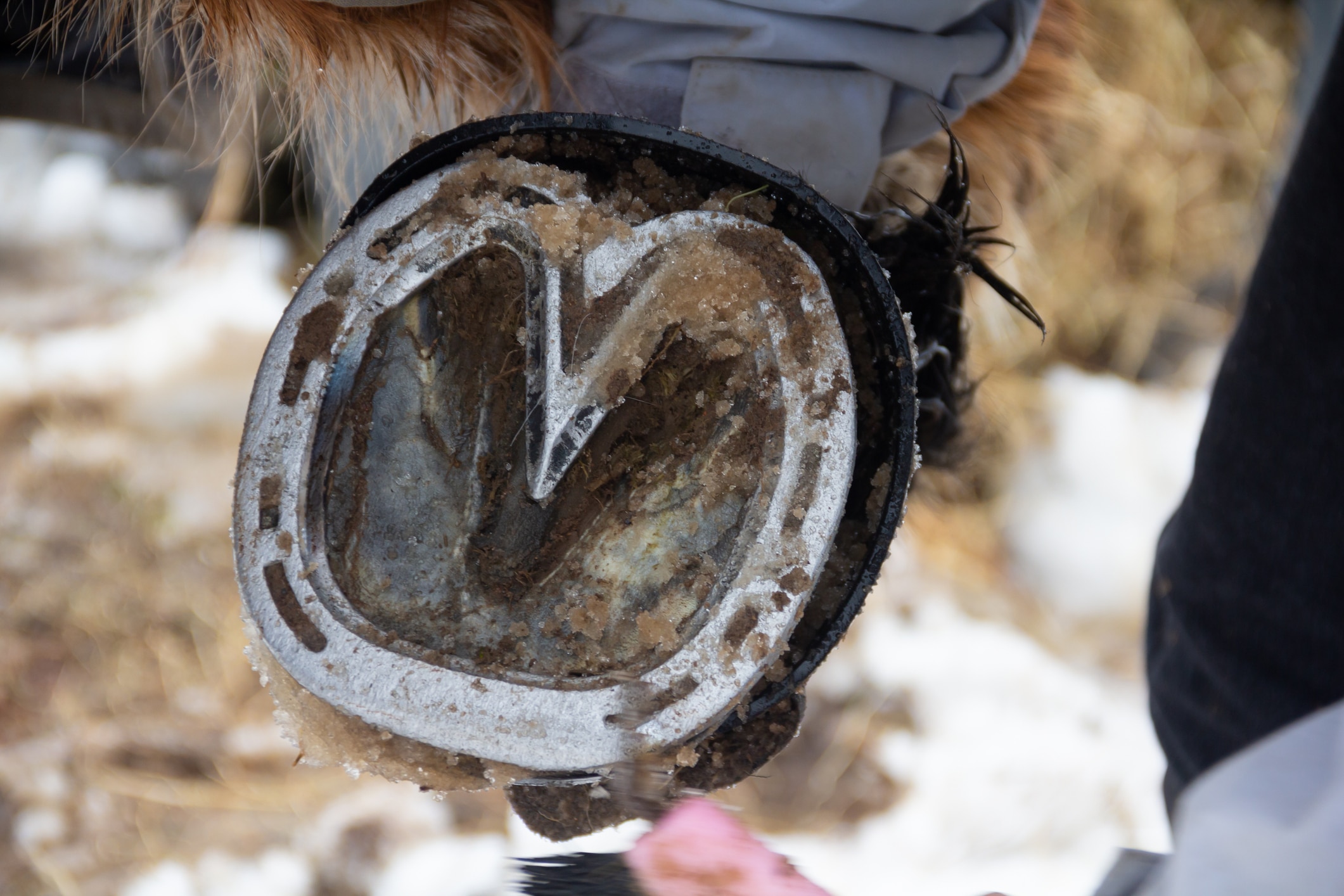
A bar shoe on a horse's hoof
Photo by Eileen Groome/iStock / Getty Images Plus
“Horses all respond differently because of the complexity of the soft tissue structure,” explains Doug Russo, an advanced Certified Journeyman Farrier and farrier at the Iowa State University College of Veterinary Medicine. “The joint has two facets: the navicular bursa and all the associated anatomy.”
Russo advises clients to give the horse a week after shoeing to determine if the corrective shoe is working or if another is needed. Existing inflammation must also have time to calm down before the impact of the shoeing change can be determined.
How Can I Help My Horse Feel More Comfortable?
The first step to helping a horse with navicular change feel more comfortable is maintaining a regular hoof care schedule with a skilled farrier.
O’Brien stresses that managing navicular with your farrier is critical to their comfort as well as some adjustments you can do with guidance from your veterinarian.
Alternative treatment options your veterinarian may recommend include:
- Altering the horse’s work/performance schedule and/or expectations as necessary
- Administering non-steroidal anti-inflammatory drugs (NSAIDs) such as phenylbutazone or Equioxx
- Using bisphosphonates (drugs that slow bone breakdown) like Osphos
- Feeding supplements that support hoof growth
“Listen to your horse and see what they want,” she says. “If they do better with turnout, provide more turnout. If they prefer a deeply bedded stall with just a little arena time during the day, give them that. We tailor our recommendations to what clients report their horses need at home.”
Recommended Products
How Do I Prevent Navicular in My Horse?
There is no guaranteed method for preventing navicular disease in horses predisposed to developing the syndrome. However, there are a few tips to help prevent navicular and potentially catch signs of navicular syndrome early.
Maintain a Consistent Farrier Schedule
Proper trimming and shoeing help keep the hoof balanced and ensure the horse has proper heel support.
Provide Good Nutrition
Keep the horse on a balanced diet that includes essential protein, vitamins, and minerals to support hoof, bone, and ligament health.
Keep your horse at an appropriate weight (avoid obesity) to lower the risk of navicular. You can easily check your horse’s weight by using a weight tape like the QiK Height & Weight Horse Measuring Tape.
Recommended Product
Schedule Rest
Avoid overworking your horse and plan days off between training and/or competition schedules. Also, avoid intense exercise on hard ground or in areas with poor quality of footing.
FAQs About Navicular in Horses
What are the first signs of navicular in horses?
Soreness, toe-first hoof landing, and a change in performance can indicate navicular.
Is it OK to ride a horse with navicular?
It depends on the horse. A management plan created in partnership with a farrier and veterinarian allows horses to continue to be ridden comfortably, and many compete, though some may require a reduced workload.
How long can a horse live with a navicular?
It depends on the horse and their quality of life when diagnosed. With proper management, many horses can enjoy a long life.
Does navicular get worse with age?
Navicular is a progressive disease. It is less influenced by the horse’s age—some young horses are diagnosed with navicular, though it’s most common in middle-aged horses—but its progression is linked more to the individual horse than age.
That said, the aging process naturally contributes to bone degeneration in all animals, including humans, so naturally, the horse will experience bone changes as they age.
Can a horse with navicular go barefoot?
It depends on the horse. Talk with your veterinarian and farrier to determine if your horse can be comfortable barefoot.
